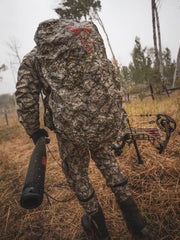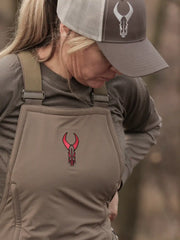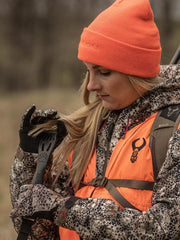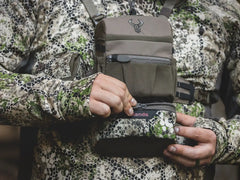We’ve all heard some version of the “No great hunting story starts with ‘It was a beautiful sunny day…” but is that based in reality or just poetic license?
Turns out, this is one of those campfire tales that has more than a nugget of truth. Weather, both ahead of and during the season, has a huge impact on the deer you will see.
Before the Season
If you’re in one of the many areas being hit with drought, it will be a tough season in the field.
It’s obvious on one hand, less rain means less vegetation which means less nutrition. But it goes much deeper. When rainfall is marginal, it also means less water for wildlife.
This can lead to higher stress levels for does, who may still deliver twins but often will abandon one so the other can be supported by mom. Nature’s a b**** sometimes.
Less vegetation also means less ground cover, so newborn or young fawns are more susceptible to predators. Combined, these factors result in a reduced deer population, so you may struggle to find a big buck, or even a proper shooter.
For bucks, this also means less nutrition for antler development. If you have a score in mind, you may have to work harder or travel to a more accommodating climate to find success. And as odd as it sounds, you may want to be even more selective in these seasons to ensure solid populations down the road.
Tactically, you’ll find success wherever you can find food and water sources. This is a constant no matter the weather, but in drought conditions these will take priority in the whitetail’s mind over things like good ground cover or less traffic pressure.
During the Season
Bad weather makes for good hunting. It’s not just an old wives’ tale, it’s science.
Our pals at Deer and Deer Hunting magazine ran the math (thank goodness… ugh, math) and came up with data that show a day with high barometric pressure and a temp either eight degrees lower or nine degrees above average boosts your odds of anchoring a deer to 138% that of an optimal weather day.
Now, if you hunt a day with high barometric pressure and average wind speed and temp, you see your odds of harvesting a booner jump to 154% of an average day.
So, the takeaway here is invest in a barometer (or weather app) and look for those days when the atmosphere is weighing heavy, as that’s usually a sign of bad stuff building and the deer get moving ahead of the storm.
Temperature… shockingly doesn’t have nearly the impact we’ve always been told. But in general, the closer the day is to average, the better off you’ll be.
Wind speed, on the other hand, has a noticeable impact but not for the obvious reasons.
Sure, lower wind speed gives Mr. Whitetail a better chance of busting you with his nose, so that impact is easy to ascertain. But the reduced chance in higher wind is a bit deceptive. Yes, archers hate gusty wind, and it can also play havoc on longer rifle shots. But the biggest factor of high wind on reduced success rates is likely more in line with the simple fact that there are fewer of us in the field on windy-ass days.
So, if you have a day that’s gusty, high pressure but pretty normal temps… that’s a good day of hunting, statistically speaking.
Get yourself a good weather app, maybe even a barometer, and learn to use them both. A little amateur meteorology can pay off come hunting season.
Also, don’t forget to hit us up for apparel built to handle all wind, rain and temperature conditions.















